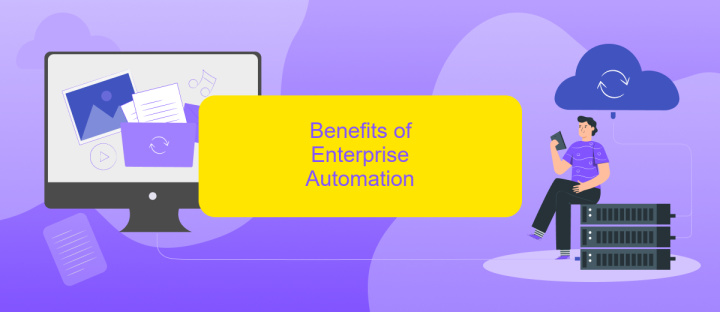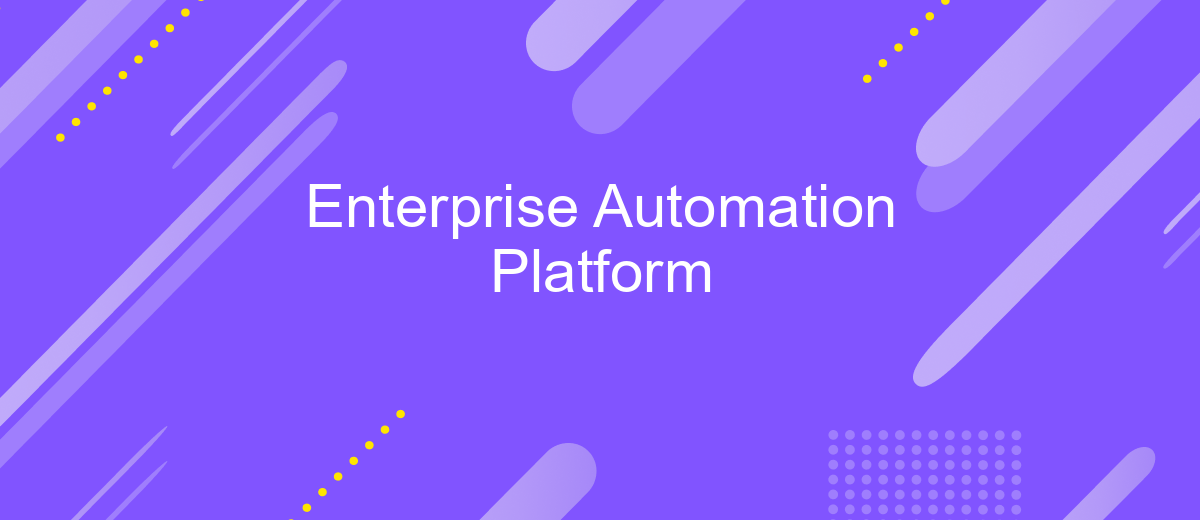Enterprise Automation Platform
In today's fast-paced business environment, efficiency and productivity are paramount. An Enterprise Automation Platform (EAP) offers a comprehensive solution to streamline operations, reduce manual tasks, and enhance overall organizational performance. By integrating advanced technologies and automating complex workflows, EAP empowers businesses to achieve greater agility, accuracy, and scalability, ensuring they stay competitive in an ever-evolving market.
Introduction
In today’s fast-paced business environment, enterprises must continuously seek ways to streamline operations and enhance productivity. An Enterprise Automation Platform (EAP) emerges as a pivotal solution, enabling organizations to automate repetitive tasks, integrate various systems, and optimize workflows. By leveraging advanced technologies such as artificial intelligence and machine learning, EAPs can significantly reduce operational costs and improve overall efficiency.
- Automate repetitive tasks to save time and resources
- Integrate disparate systems for seamless data flow
- Optimize workflows to enhance productivity
- Leverage AI and ML for intelligent decision-making
- Reduce operational costs and minimize human error
Implementing an Enterprise Automation Platform is not just a technological upgrade but a strategic move that aligns with modern business needs. As companies strive to stay competitive, the adoption of EAPs can provide a significant edge by fostering innovation, improving accuracy, and ensuring scalability. This introduction aims to explore the various facets of EAPs and their transformative potential for enterprises across industries.
Key Components of an Enterprise Automation Platform

An Enterprise Automation Platform comprises several key components that work together to streamline business processes and enhance operational efficiency. One of the primary components is the workflow automation engine, which orchestrates tasks, manages dependencies, and ensures that processes are executed in the correct sequence. This engine often integrates with various business applications to automate repetitive tasks, reducing the need for manual intervention and minimizing errors.
Another crucial component is the integration hub, which connects disparate systems and facilitates seamless data exchange between them. Services like ApiX-Drive play a significant role in this aspect by providing pre-built connectors and customizable integrations, enabling businesses to link their existing software effortlessly. Additionally, the platform includes analytics and reporting tools that offer insights into process performance, helping organizations make data-driven decisions. Finally, security features ensure that all automated processes and data exchanges are protected, maintaining the integrity and confidentiality of sensitive information.
Benefits of Enterprise Automation

Implementing an Enterprise Automation Platform can significantly enhance the efficiency and productivity of an organization. By automating repetitive tasks and streamlining complex workflows, companies can focus on strategic initiatives and innovation, rather than getting bogged down by routine operations.
- Increased Efficiency: Automation reduces the time and effort required to complete tasks, leading to faster turnaround times and improved operational efficiency.
- Cost Savings: By minimizing manual labor and reducing errors, businesses can save on labor costs and avoid costly mistakes.
- Enhanced Accuracy: Automated processes are less prone to human error, ensuring higher accuracy and consistency in operations.
- Scalability: Automation platforms can easily scale with the growth of the business, handling increased workloads without the need for additional resources.
- Improved Compliance: Automation ensures that processes adhere to regulatory requirements and standards, reducing the risk of non-compliance.
Overall, an Enterprise Automation Platform empowers organizations to achieve greater agility and resilience in a competitive market. By leveraging automation, businesses can unlock new opportunities for growth and innovation, ensuring long-term success and sustainability.
Challenges of Enterprise Automation

Implementing an enterprise automation platform presents numerous challenges that organizations must navigate to achieve optimal efficiency. One of the primary hurdles is the integration of disparate systems and legacy technologies, which often require significant time and resources to harmonize. Additionally, ensuring data integrity and security during the automation process is crucial, as any breaches or inconsistencies can have severe repercussions.
Another significant challenge is the resistance to change from employees and stakeholders. Automation can be perceived as a threat to job security, leading to reluctance in adoption and collaboration. Furthermore, the complexity of automating intricate business processes demands a high level of expertise and continuous monitoring to ensure smooth operation.
- Integration of legacy systems
- Ensuring data security and integrity
- Resistance to change from employees
- Complexity of business processes
- Requirement for specialized expertise
Addressing these challenges requires a strategic approach that includes thorough planning, stakeholder engagement, and continuous training. By proactively managing these obstacles, organizations can leverage enterprise automation platforms to enhance productivity, reduce costs, and drive innovation.
- Automate the work of an online store or landing
- Empower through integration
- Don't spend money on programmers and integrators
- Save time by automating routine tasks
Conclusion
In conclusion, the Enterprise Automation Platform is a pivotal tool for modern businesses seeking to enhance efficiency and streamline operations. By automating routine tasks and integrating various business processes, companies can significantly reduce manual effort, minimize errors, and improve overall productivity. The platform's ability to adapt to different industries and scale according to business needs makes it an indispensable asset for any organization aiming to stay competitive in today's fast-paced market.
Furthermore, leveraging integration services like ApiX-Drive can greatly simplify the process of connecting disparate systems and applications. ApiX-Drive offers a user-friendly interface and robust functionalities that enable seamless data flow between various tools, ensuring that all parts of the business ecosystem work in harmony. By utilizing such services, businesses can achieve a higher level of automation and operational coherence, ultimately driving better outcomes and fostering growth.
FAQ
What is an Enterprise Automation Platform?
How can an Enterprise Automation Platform benefit my business?
What types of processes can be automated with an Enterprise Automation Platform?
How do I integrate different systems using an Enterprise Automation Platform?
Is it difficult to implement an Enterprise Automation Platform?
Apix-Drive will help optimize business processes, save you from a lot of routine tasks and unnecessary costs for automation, attracting additional specialists. Try setting up a free test connection with ApiX-Drive and see for yourself. Now you have to think about where to invest the freed time and money!


